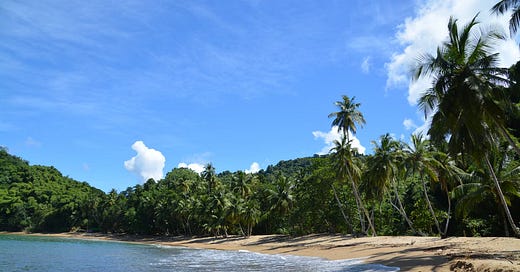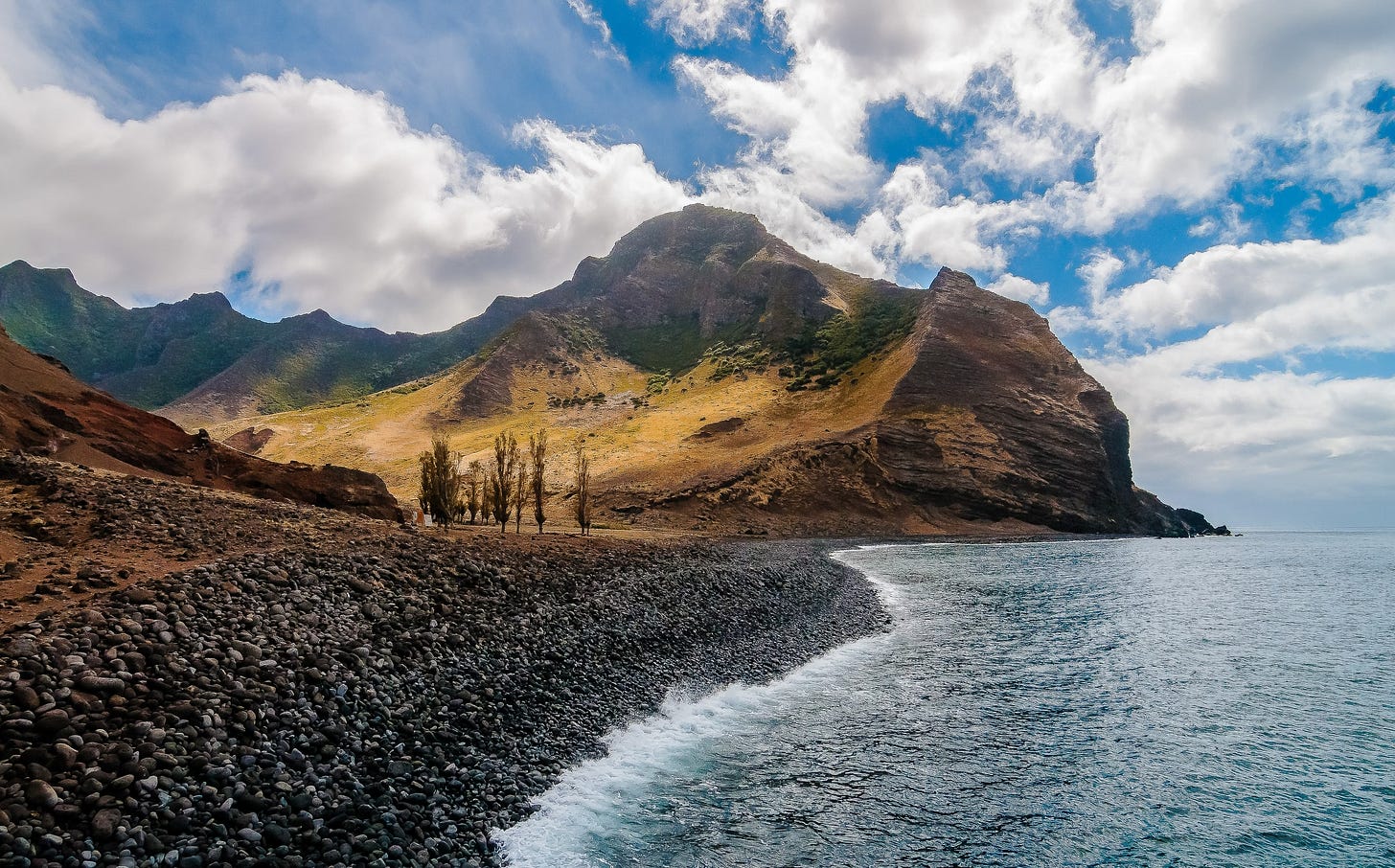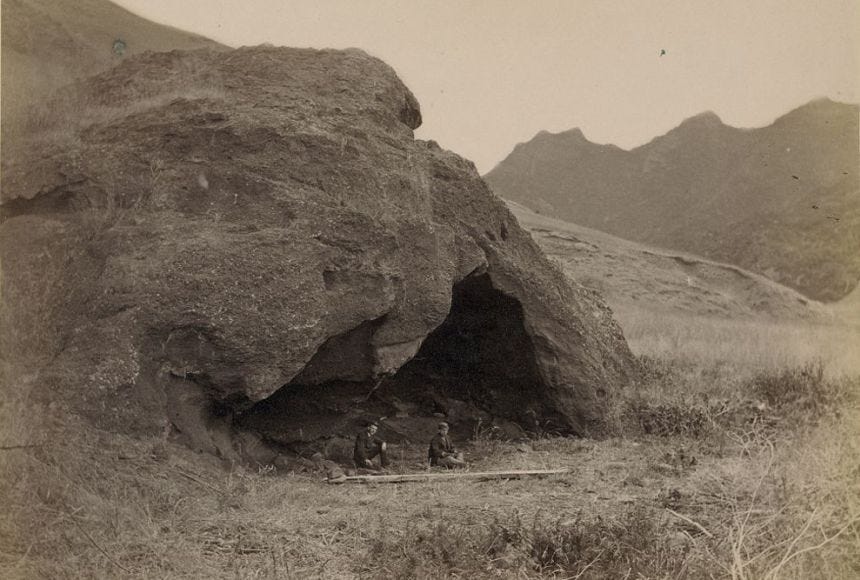Dear Castaways,
We’ve read the first quarter of Robinson Crusoe – what are you thoughts? Here are my impressions:
When Robinson Crusoe starts describing his life on the island, he estimates his position as ‘the Latitude of 9 Degrees 22 Minutes North of the Line’ – and he later discovers that he is within sight of ‘the great island Trinidad’.
This places his island off the coast of Venezuela – opposite the mouth of the Orinoco river – about 50 miles south-east of Trinidad. There are no real islands in this area of the Atlantic.
There is a West Indian tradition, however, that the island of Tobago is Crusoe’s ‘Island of Despair’, even though Tobago lies 20 miles to the north-east of Trinidad, at 11 Degrees 14 Minutes N.
There is a cave on the island, which has been known since the 1890s as ‘Crusoe’s Cave’ although it’s a sea cave that floods at each high tide, so it seems a little impractical.
The great Saint Lucian poet Derek Walcott wrote ‘Crusoe’s Island’ (1965) about Tobago:
Confusingly, the Chilean island in the Pacific Ocean formerly known as ‘Más a Tierra’ was renamed ‘Robinson Crusoe Island’ in 1966, because it is the island where the Scottish sailor Alexander Selkirk, a possible model for Robinson Crusoe, was marooned for four years in the first years of the eighteenth century.
In September 1704, Selkirk was the sailing master on board the English ship Cinque Ports. He was concerned about its seaworthiness and after an argument with the captain, Thomas Stradling, requested to be left on the uninhabited island while the ship was restocking. Stradling agreed and left Selkirk on the island with nothing but a musket, a hatchet, a knife, a cooking pot, a Bible, some bedding and some clothes.
In fact the Cinque Ports did indeed go on to founder shortly afterwards and the rest of the crew swam to the rocky island of Malpelo, where they were taken prisoner by the Spanish. Meanwhile Selkirk survived by eating shellfish, berries and wild turnips – and hunting goats that had been left on the island by previous ships.
He was eventually rescued in February 1709 by the privateer Woodes Rogers and his story became famous after it was published in Edward Cooke’s A Voyage to the South Sea and Round the World (1712), seven years before Robinson Crusoe was published.
There is a cave on Robinson Crusoe Island where Selkirk sheltered, which admittedly does look the spitting image of Crusoe’s makeshift home.
This week we’ll read the second quarter of Robinson Crusoe – up to page 130 in the Oxford edition: ‘. . . and what strange unaccountable Whimsies came into my Thoughts by the Way.’ I hope you enjoy it! I look forward to discussing with you on Friday 18th.
Here are links to our previous Robinson Crusoe posts:
The Schedule (9 June)
Daniel Defoe (23 June)
The Rise of the Novel by Ian Watt (4 July)
If you’re not reading Robinson Crusoe with us, remember you can choose to opt out of our conversation. Just follow this link to your settings and, under Notifications, slide the toggle next to ‘Robinson Crusoe’. A grey toggle means you will not receive emails relating to this title.








I am really enjoying this. I will say that all of the slave trade caught me off guard, and I did have to remind myself of when it was written. But I still felt he deserved what he got for participating in it.
Being able to set himself up as well as he did from the wreckage was quite fortunate. I was pleased to see that all of his projects took "real" time. It took days to cut a tree, shape it and install it as fence post. His camp wasn't set up in a weekend, it took months and was hard. Looking forward to the next installment
This is a delightful summer read, out on the patio with a cool drink. I have read it before, at a much younger age when it seemed a much drier read, but now I am much better able to visualize the scene and enjoy the cinematic adventure, and, having lived a little, to get much more out of the moral and philosophical dilemmas presented in this book. Thanks for bringing us this book Henry!